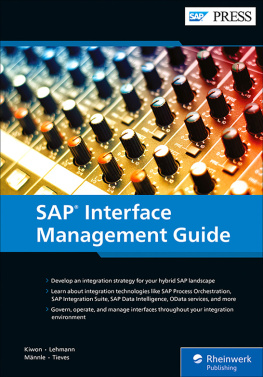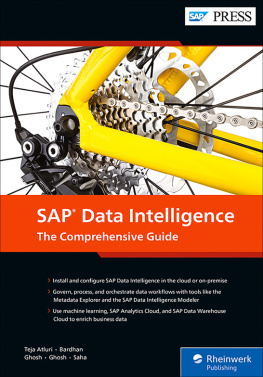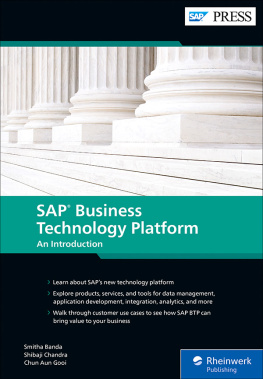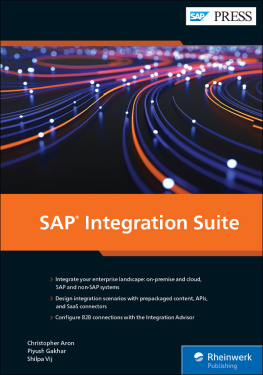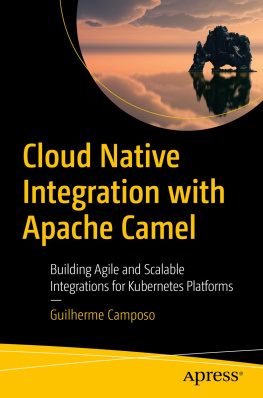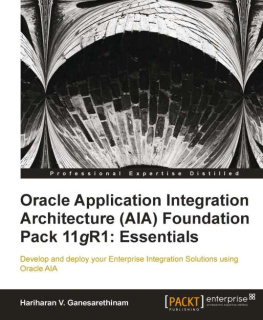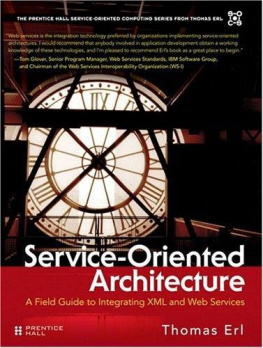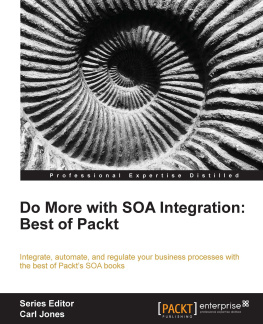Adam Kiwon - SAP Interface Management Guide
Here you can read online Adam Kiwon - SAP Interface Management Guide full text of the book (entire story) in english for free. Download pdf and epub, get meaning, cover and reviews about this ebook. City: Bonn, year: 2022, publisher: SAP Press, genre: Computer. Description of the work, (preface) as well as reviews are available. Best literature library LitArk.com created for fans of good reading and offers a wide selection of genres:
Romance novel
Science fiction
Adventure
Detective
Science
History
Home and family
Prose
Art
Politics
Computer
Non-fiction
Religion
Business
Children
Humor
Choose a favorite category and find really read worthwhile books. Enjoy immersion in the world of imagination, feel the emotions of the characters or learn something new for yourself, make an fascinating discovery.
- Book:SAP Interface Management Guide
- Author:
- Publisher:SAP Press
- Genre:
- Year:2022
- City:Bonn
- Rating:5 / 5
- Favourites:Add to favourites
- Your mark:
SAP Interface Management Guide: summary, description and annotation
We offer to read an annotation, description, summary or preface (depends on what the author of the book "SAP Interface Management Guide" wrote himself). If you haven't found the necessary information about the book — write in the comments, we will try to find it.
*Develop an integration strategy for your hybrid SAP landscape
*Learn about interface technologies like SAP Process Orchestration, SAP Integration Suite, SAP Data Intelligence, OData services, and more
*Govern, operate, and manage interfaces throughout your integration environment
Hybrid Integration Concepts
Explore integration architecture styles, from point-to-point integration to enterprise service buses. Learn about the process- and data-based integration styles used in SAP systems. Understand the frameworks and methodologies available for building your own integration strategy and managing interfaces.
Integration Tools
Discover SAP interface standards and protocols, including OData services and RESTful services. Learn about SAP integration tools such as SAP Process Orchestration, SAP Data Intelligence, SAP Event Mesh, SAP Integration Suite, and more.
Governance and Operations
Standardize the development and operation of interfaces. Create catalogs of integration overviews, develop and use reports, and outline company-wide integration policies. Learn to monitor, test, and manage the daily cycle of your integration landscape.
*Hybrid integration
*Interface management
*Process-based and data-based integration
*Operations
*Governance
*Integration Solution Advisory Methodology (ISA-M)
*SAP Process Orchestration
*SAP Integration Suite
*SAP Data Intelligence
*SAP Solution Manager
Adam Kiwon: author's other books
Who wrote SAP Interface Management Guide? Find out the surname, the name of the author of the book and a list of all author's works by series.

